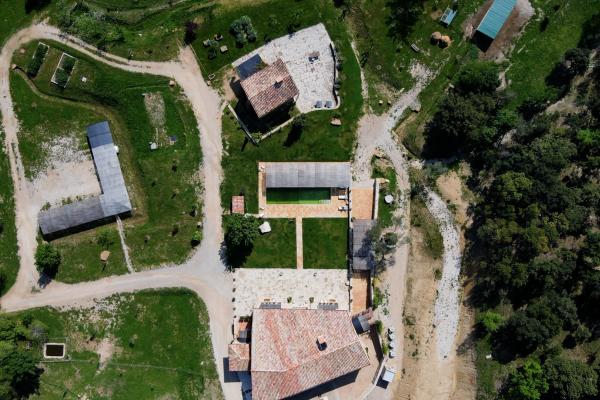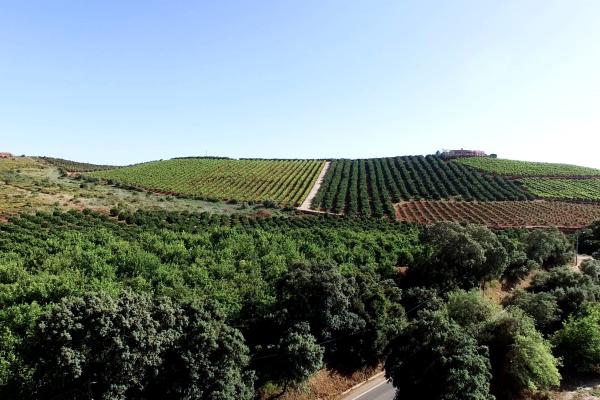Overview
In order to meet demand and ensure sufficient quality for its use in human activities, groundwater needs to provide a safe and long-term sustainable source of water. As a finite resource, groundwater needs to be protected from pollution and over-exploitation. The EU legislation on protecting groundwater focuses on achieving good chemical status and good quantitative status. Measures must also be taken to prevent and limit the input of pollutants and reverse deteriorating trends in groundwater quality.
Background
Groundwater is a precious resource hidden from sight, where pollution poses a serious threat.
Over 95% of the world's freshwater, excluding glaciers and ice caps, is found underground. Groundwater provides the steady base flow of rivers and wetlands, being of utmost importance for these natural ecosystems, and it is at the same time the main source of water for human consumption, agriculture, industry and tourism. As groundwater moves slowly, the impact of human activities lasts for a relatively long time, meaning that pollution that occurred some decades ago is still threatening groundwater quality today. The accumulation of some pollutants will continue for several generations to come. Remediation of groundwater to remove pollutants is very difficult, as is locating and measuring the presence and impacts of pollution on groundwater. This leads to a lack of awareness and evidence on its extent. Groundwater resources are also under increasing pressure from water abstraction and climate change.
Objectives
The EU’s objectives include:
- preventing and limiting groundwater pollution
- ensuring that a sufficient quantity of good quality water is available for people's needs, the economy, and the environment
- sustainably managing groundwater resources and preserving the natural ecosystems dependent on them
- assessing groundwater bodies with the aim of achieving good chemical and quantitative status
In the EU
Law
Water Framework Directive (WFD)
The WFD protects groundwater across Europe and highlights the importance of its sustainable management. It defines good groundwater status in terms of both quantitative and chemical status. Member States must designate groundwater bodies as management units and ensure that each one achieves the Directive’s environmental objectives, mirroring the requirements for surface water bodies. The WFD also recognises the importance of the links between groundwater and surface waters and specifies that good status also means protecting the surface water bodies and terrestrial ecosystems that depend on groundwater both from a flow and quality perspective.
Groundwater Directive (GWD)
The GWD provides the detailed procedures for meeting the WFD’s environmental objectives for groundwater quality. It sets EU-wide groundwater quality standards for a small number of pollutants in Annex I, requires Member States to set threshold values for substances of national concern, including, where relevant, those listed in Annex II, and requires measures to be taken to prevent or limit the input of pollutants into groundwater. The GWD establishes quality criteria allowing further improvements to be made based on monitoring data and new scientific knowledge. It represents a proportionate and scientifically sound response to the requirements of the WFD as it relates to assessments of chemical status of groundwater and the identification and reversal of significant and sustained upward trends in pollutant concentrations.
Review
The December 2019 Fitness Check concluded that the water legislation is broadly fit for purpose, with room for improvement inter alia in relation to chemical pollution, hence the proposal made in 2022.
2022 proposal to revise list of groundwater pollutants
In October 2022, the Commission adopted a proposal to revise the lists of groundwater pollutants. Two individual and three groups of pollutants are proposed for addition, with quality standards, to Annex I to the Groundwater Directive, and one substance to Annex II. The Annex I additions include: i) PFAS - a large group of “forever chemicals” used for example in cookware, clothing and furniture, fire-fighting foam and personal care products; ii) pharmaceuticals as a group, and an anticonvulsant and an antibiotic; and iii) a group of pesticide degradation products.
If the proposal is agreed by the Council and the European Parliament, Member States will be required to take measures to meet the quality standards for these pollutants and to reverse upward trends in concentrations.
Find out more in the Press Release and Questions and Answers.
Implementation
Common Implementation Strategy (CIS) Working Group on Groundwater
The CIS for the WFD aims to ensure the Directive’s coherent and harmonious implementation. Within this framework, a Groundwater Working Group was established to enable Member States and stakeholders to work with the Commission on efficient and effective approaches to implementing the WFD and GWD.
Also find out more about Member State competent authorities, including relevant national implementation websites.
Related links
Related laws: Nitrates Directive Urban Wastewater Treatment Directive, Directive on industrial emissions, Landfill Directive, Waste Framework Directive Water Framework Directive, Environmental Quality Standards Directive (EQSD)
Related topics: Industrial emissions, Urban environment
Related strategies: Circular economy action plan, Zero pollution action plan
Related Commission priorities: European Green Deal






